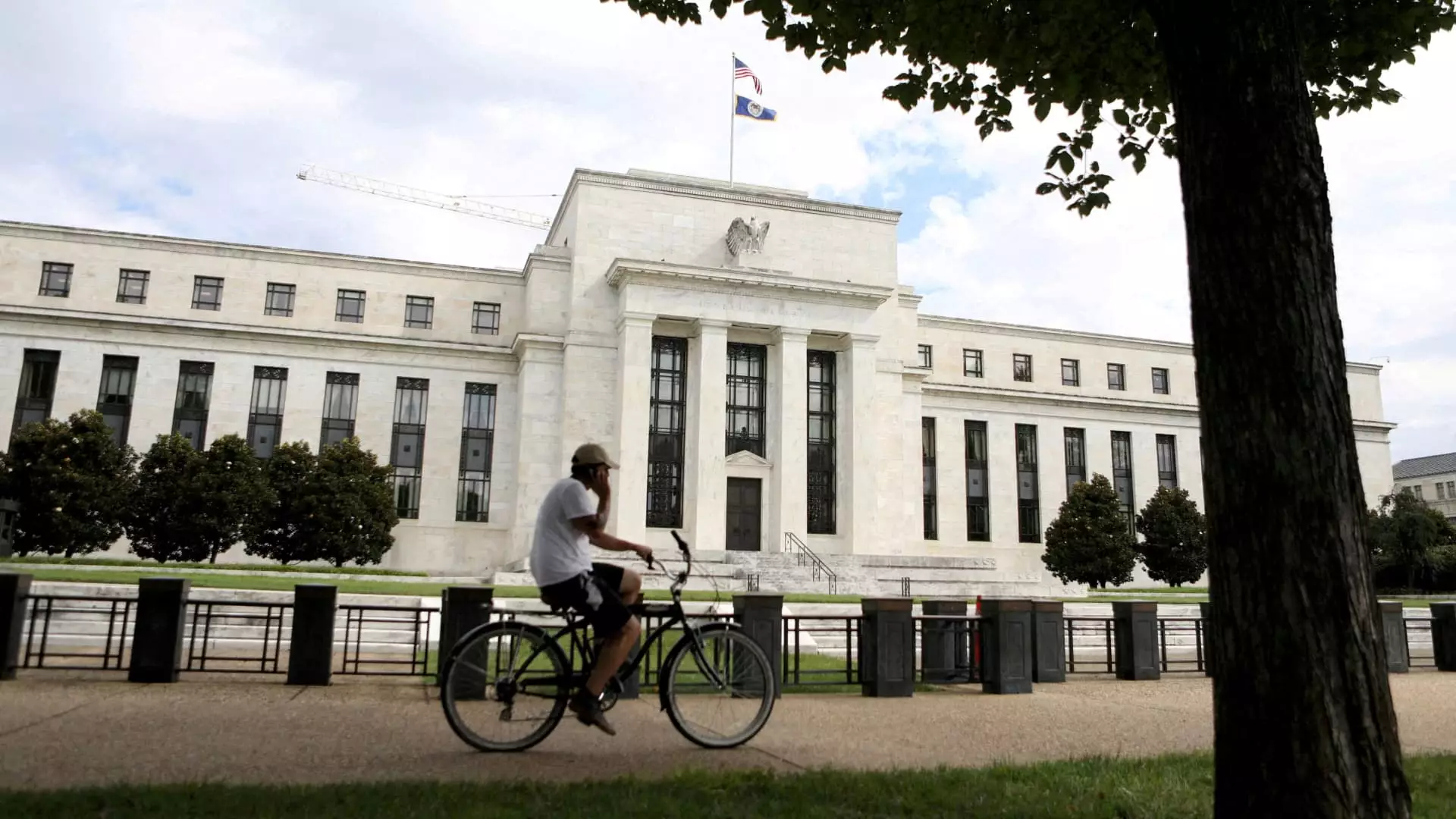As discussions around interest rate adjustments intensify, the U.S. Federal Reserve’s anticipated move to lower rates is drawing significant attention from economists and market analysts alike. According to Fitch Ratings, the impending easing cycle expected to commence during the Fed’s September policy meeting will be relatively mild compared to historical precedents. The ratings agency outlines a careful approach with planned reductions of 25 basis points each in September and December of this year, followed by a more pronounced series of cuts totaling 250 basis points spread over 25 months through 2026.
Fitch’s evaluation highlights that previous Fed easing cycles have typically seen sharper cuts, averaging 470 basis points, with a typical duration of around eight months. This historical context underscores the Fed’s intention to proceed with caution, primarily due to persistent inflation concerns that remain a central issue of economic policy. While inflation rates have begun to moderate, they still exceed the Fed’s target of 2%. This nuanced understanding of the current economic landscape suggests that the pathway to easing may not be as straightforward as it once appeared.
In its recent analysis, Fitch underscored the importance of inflation metrics in shaping the Federal Reserve’s decision-making process. The Consumer Price Index (CPI) reported a year-over-year increase of 2.5% in August, which, while lower than experts expected, indicates that inflation pressures have not entirely subsided. The relatively slight uptick of 0.2% from July paints a picture of gradual improvement, but the persistence of core inflation—factoring out volatile categories like food and energy—remains troubling.
The details reveal a concerning trend where the substantial decrease in core inflation rates may be substantially influenced by the decline in automobile prices. Fitch warns that this particular reprieve may not be sustainable in the long run. Consequently, the Fed faces a complex challenge: easing monetary policy in a climate where inflationary pressures, albeit reduced, continue to linger and the underlying causes remain inadequately understood.
Interestingly, the ripples of U.S. monetary policy decisions extend well beyond North America, particularly affecting Asian economies. Fitch anticipates that China, notably, will continue to pursue rate cuts in response to its own economic challenges. The People’s Bank of China’s unexpected reduction in the one-year Medium-term Lending Facility (MLF) in July serves as a clear indicator of the shifting economic landscape; with the MLF rate now at 2.3%, the PBOC appears poised to take further action.
The deflationary pressures that have emerged in China—marked by declining producer and export prices—underscore the need for continued monetary easing. With core inflation plummeting and projections for CPI in 2024 lowered to 0.5%, the landscape suggests a profound economic slowdown, compelling the PBOC to take decisive steps to stimulate growth.
Contrasting sharply with the easing measures anticipated from the Federal Reserve, the Bank of Japan (BOJ) has adopted a markedly different approach. Having recently implemented a more aggressive rate hike than previously forecasted, the BOJ’s actions signal a newfound confidence in Japan’s inflationary environment. Core inflation has now surpassed the BOJ’s target for 23 consecutive months, and the willingness of companies to offer higher wages presents a striking departure from the stagnation witnessed during Japan’s “lost decade.”
The BOJ’s commitment to achieving a “virtuous wage-price cycle” frames its monetary policy as one characterized by optimism and stability, with Fitch projecting an increase in the central bank’s benchmark rate to 0.5% by the end of 2024, and possibly reaching 1% by 2026. This stands in stark contrast to the more cautious stance of the Fed and illustrates the multifaceted dynamics of global monetary policy as economies contend with unique challenges.
The Federal Reserve’s approach to rate cuts epitomizes a delicate balancing act amidst persistent inflation challenges and an unpredictable global economic landscape. As Fitch outlines potential trajectories for both U.S. and global monetary policies, the implications of these strategies will undoubtedly shape market expectations and investor behavior. Ultimately, the coming months will be critical, not only for the Federal Reserve but also for central banks worldwide as they navigate the complexities of inflation, economic growth, and the resulting ripple effects on both domestic and international markets. The interplay between these different economic forces will ultimately define the success of the current monetary policies and their effectiveness in fostering sustainable economic growth.

